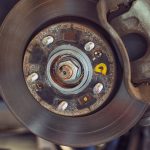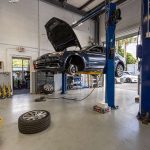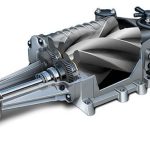For many UK drivers, few dashboard lights bring more dread than the one warning of a blocked DPF. The Diesel Particulate Filter (DPF) is crucial for reducing harmful emissions, but when it gets clogged, it can spell trouble for both your car and your wallet.
If you’ve ever wondered whether you can simply clean a blocked DPF or if you’ll be forced into a costly DPF replacement, this article will steer you through the signs, solutions, and when to admit defeat and replace the filter entirely.
Why Does a DPF Get Blocked?
A blocked DPF isn’t a rare problem, especially for diesel vehicles used mainly on short trips around town. Here’s why:
- Soot Build-Up: The DPF traps soot from diesel exhaust. It’s supposed to burn this off during regeneration, but stop-start driving often prevents the system from reaching the high temperatures required.
- Failed Regeneration: If regeneration fails repeatedly, soot builds up until the DPF becomes clogged.
- Mechanical Faults: Issues like faulty sensors, EGR valves, or turbo problems can cause incomplete combustion, sending extra soot into the DPF.
Ignoring the warning signs of a blocked DPF can lead to reduced engine power, higher fuel consumption, and, eventually, complete engine damage.
Signs Your DPF is Blocked
Early detection can save you hundreds of pounds. Look out for:
- DPF Warning Light: The most obvious sign. Don’t ignore it.
- Loss of Power: Your car might feel sluggish.
- Increased Fuel Consumption: Blockages force your engine to work harder.
- Frequent Regeneration: The car keeps trying to clear the blockage but can’t succeed.
Once these symptoms appear, acting quickly could help you avoid a full DPF replacement.
How to Clean a Blocked DPF
The good news is that a blocked DPF doesn’t always mean the end of the road for your filter. Cleaning it might restore performance without the expense of a new unit.
Passive Regeneration
If the blockage is mild, a longer drive at motorway speeds might trigger passive regeneration. Aim for:
- 20-30 minutes at 2,000+ RPM
- Consistent speed without heavy braking
This allows the exhaust to heat up and burn off soot.
Active Regeneration
Some vehicles perform active regeneration automatically. However, if interrupted too often (e.g. short trips), soot builds up. If your car has a manual regeneration option, check the owner’s handbook for instructions.
Professional DPF Cleaning
If home solutions fail, many UK garages offer professional DPF cleaning. They’ll use specialised machines and chemicals to flush out the soot. It’s often cheaper than a full DPF replacement, with prices ranging from £150–£300.
When to Consider a DPF Replacement
Unfortunately, cleaning can’t save every blocked DPF. In some cases, a DPF replacement is your only option.
Reasons You’ll Need a Replacement:
- Melted or Cracked DPF Core: Excessive heat can physically damage the filter.
- Oil or Ash Contamination: Unlike soot, ash can’t be burned off, and oil contamination often signals deeper engine issues.
- Repeated Blockages: If cleaning hasn’t worked, it may mean the filter’s structure is too damaged.
A DPF replacement is a significant expense, typically ranging from £1,000 to over £2,500 for parts and labour, depending on your vehicle.
Can You Drive With a Blocked DPF?
Many UK drivers are tempted to keep driving despite the warning lights. That’s a risky choice. A blocked DPF:
- Increases back pressure, straining your engine.
- It can cause expensive turbo damage.
- It may push your car into limp mode, leaving you crawling home.
Also, a failed DPF is an MOT failure, meaning your car could be declared unroadworthy until fixed. If you want to avoid a DPF replacement, never ignore early warnings.
The Bottom Line
A blocked DPF can be frustrating, but it doesn’t always mean your car’s destined for the scrapyard. In many cases, prompt cleaning or professional intervention can restore your filter’s function.
However, if blockages persist or the filter suffers irreversible damage, a DPF replacement is the only safe route. Investing in good-quality fuel, regular servicing, and occasional longer drives can help prevent future DPF troubles and keep you motoring smoothly across the UK’s roads.
So, the next time that warning light appears, don’t panic. Check your options, act quickly, and you might save yourself from the cost and hassle of a full DPF replacement.











